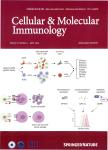Tubulointerstitial nephritis antigen-like 1 is a novel matricellular protein that promotes gastric bacterial colonization and gastritis in the setting of Helicobacter pylori infection
作者机构:Department of Microbiology and Biochemical PharmacyCollege of Pharmacy and Laboratory MedicineThird Military Medical UniversityChongqingChina The 940th Hospital of Joint Logistics Support Force of PLALanzhouChina The Collaborative Innovation Center of Tissue Damage Repair and Regeneration Medicine of Zunyi Medical UniversityZunyiGuizhouChina Department of General Surgery and Center of Minimal Invasive Gastrointestinal SurgerySouthwest HospitalThird Military Medical UniversityChongqingChina Department of GastroenterologyChongqing University Cancer HospitalChongqingChina Department of GastroenterologyXinQiao HospitalThird Military Medical UniversityChongqingChina La Trobe Institute of Molecular ScienceLa Trobe UniversityBundooraVICAustralia Department of GastroenterologyAffiliated Hospital of Southwest Medical UniversityLuzhouSichuanChina National Engineering Research Center of Immunological ProductsThird Military Medical UniversityChongqingChina
出 版 物:《Cellular & Molecular Immunology》 (中国免疫学杂志(英文版))
年 卷 期:2023年第20卷第8期
页 面:924-940页
核心收录:
学科分类:1002[医学-临床医学] 100201[医学-内科学(含:心血管病、血液病、呼吸系病、消化系病、内分泌与代谢病、肾病、风湿病、传染病)] 10[医学]
基 金:supported by grants from the National Natural Science Foundation of China(82070578,81870394,82000530 and 81670510) Chongqing Natural Science Fund for Distinguished Young Scholars(cstc2019jcyjjqX0003) Science Innovation Capacity Promotion Project of Army Medical University(2019XQY03) National Key Research and Development Program of China(2016YFC1302200) Collaborative Innovation Center of Chinese Ministry of Education(2020-39)
主 题:Helicobacter pylori TINAGL1 Colonization Gastritis
摘 要:The interaction between the gastric epithelium and immune cells plays key roles in H. pylori-associated pathology. Here, we demonstrate a procolonization and proinflammatory role of tubulointerstitial nephritis antigen-like 1 (TINAGL1), a newly discovered matricellular protein, in H. pylori infection. Increased TINAGL1 production by gastric epithelial cells (GECs) in the infected gastric mucosa was synergistically induced by H. pylori and IL-1β via the ERK-SP1 pathway in a cagA-dependent manner. Elevated human gastric TINAGL1 correlated with H. pylori colonization and the severity of gastritis, and mouse TINAGL1 derived from non-bone marrow-derived cells promoted bacterial colonization and inflammation. Importantly, H. pylori colonization and inflammation were attenuated in Tinagl1−/− and Tinagl1ΔGEC mice and were increased in mice injected with mouse TINAGL1. Mechanistically, TINAGL1 suppressed CCL21 expression and promoted CCL2 production in GECs by directly binding to integrin α5β1 to inhibit ERK and activate the NF-κB pathway, respectively, which not only led to decreased gastric influx of moDCs via CCL21-CCR7-dependent migration and, as a direct consequence, reduced the bacterial clearance capacity of the H. pylori-specific Th1 response, thereby promoting H. pylori colonization, but also resulted in increased gastric influx of Ly6Chigh monocytes via CCL2-CCR2-dependent migration. In turn, TINAGL1 induced the production of the proinflammatory protein S100A11 by Ly6Chigh monocytes, promoting H. pylori-associated gastritis. In summary, we identified a model in which TINAGL1 collectively ensures H. pylori persistence and promotes gastritis.



